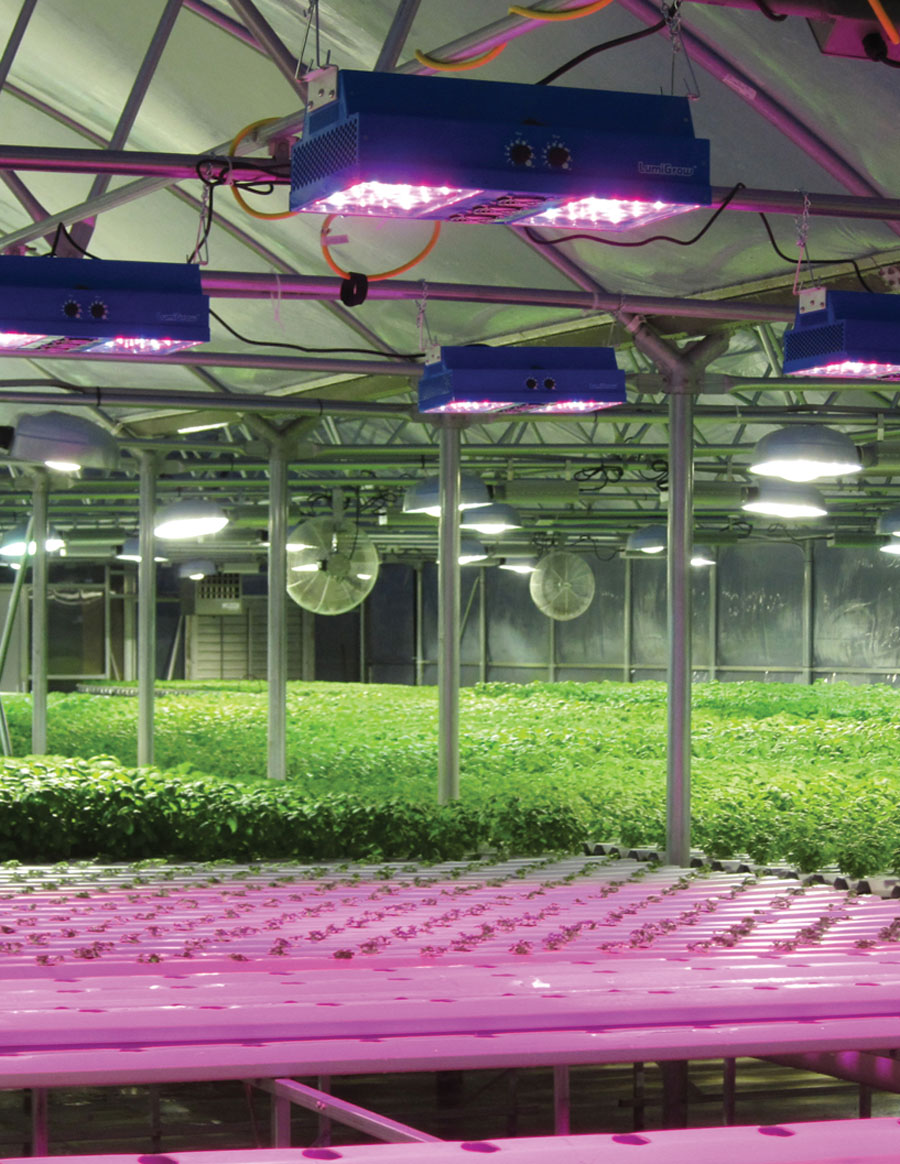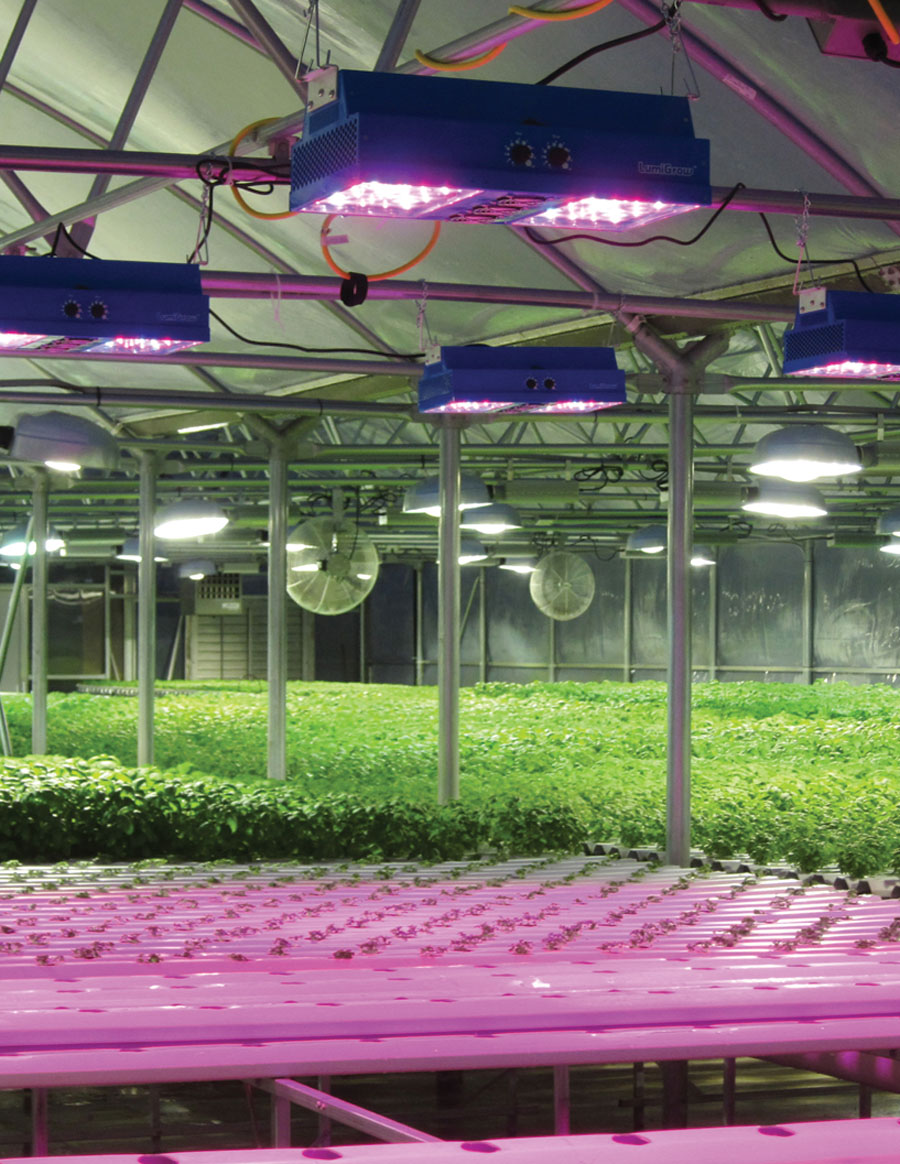
Shedding Some Light on Greenhouse Lighting Options
Greenhouse growers know the importance of balancing the many different parameters involved in a successful growing operation. With a greenhouse setup, lighting is one of the most important factors for growers to control so their hard work and valuable plants can flourish and produce to their full potential. As technology and growing practices have advanced, greenhouse lighting options have also become more plentiful. With options for all types of growers, it is helpful to know what types of grow lighting are ideal for different applications — most importantly, your own!
Compact Fluorescent Lighting (CFLs)
Considered by most to have replaced traditional incandescent lighting, CFLs have made their way into the majority of homes as a cost-effective alternative to incandescent bulbs. As technology has improved, CFLs has developed and made their way into greenhouses as a great option for growers who need full-spectrum lighting. When plants need light that is as close to real sunlight as possible, full-spectrum lighting is a grower’s best choice and CFLs offer this. Because full-spectrum lighting keeps plants blooming for most of the year, CFLs are a good option for growers who have wintertime growing needs. This choice is also ideal for those who are starting seeds. Because the full-spectrum light provided by CFLs is similar to sunlight, it allows young seeds exposure to the light source that will ensure they develop properly. Cool white fluorescent light is a good choice for young seedling plants.
CFLs are usually available with magnetic or electronic ballasts. While magnetic ballasts need a short amount of time to reach full brightness, electronic ballasts are at full brightness immediately. Depending on brightness needs, CFL bulbs can range from 30 to 100 lumens per watt, lasting between 7,000 to 24,000 hours, based on bulb type. When purchasing compact fluorescents for growing purposes, be sure to check the temperature range on packaging to ensure the appropriate temperature is used for the plants being grown. Younger plants benefit from cooler temperature light, which encourages bushy growth, while more mature plants can benefit from warmer temperature light which can help stimulate blooms and the blooming process.
Metal Halide Lighting
While these are not typical choices for home lighting, metal halide lamps are ideal in greenhouses that house more mature plants. These lamps are great for areas where there is little to no natural light. The crisp, white light provides a natural sunlight-type light that is needed by plants that do not have access to much natural light. These lamps are also good for general lighting in a greenhouse that does not get much natural light, or for those who need lighting for general work purposes.
High Pressure Sodium (HPS) Lighting
HPS lighting is most commonly used in outdoor lighting applications such as parking lots, or on the side of highways. They produce a warm white light, rather than a crisp white light that comes from a metal halide lamp. HPS lamps should only be used for growing when combined with a natural light source. These lights promote budding and flowering, so they are good options for growers whose plants have progressed beyond seedlings. As a supplemental light source, the red-orange light produced by HPS lamps do not create leggy growth, which is ideal for growers who are looking to maintain the blooming processes of mature plants. HPS bulbs have a long life; however, it is important to replace according to manufacturers’ specifications to be sure lamps remain energy efficient. If growers have both metal halide and HPS lamps, many fixtures can be converted to fit both types of lamps, which save money while also providing the benefits of compact growth, great blooms and energy efficiency.
Light Emitting Diode (LED) Lighting
A fairly up-and-coming member to the world of grow lighting is the extremely energy efficient LED bulbs. Historically, LEDs have been found in very few lighting fixtures around the home. Today, these low energy alternatives to incandescent and CFL bulbs have made their way into homes and now, greenhouses. While they are a greater up-front investment, they more than pay for themselves in their long life, some of which can last eight to 10 years before needing to be changed. LED technology has advanced to the level of being considered the most energy-efficient option on the market today, which is great news for growers who need light exposure for long periods of time. LED lights are ideal for
traditional greenhouses as well as hydroponic applications. LEDs are generally easy to install and use, providing vigorous leafy growth, budding and flowering. With many LEDs having up to a 50,000-hour average lifespan, these lights are worth the initial investment.
Some LED light fixtures are specifically designed for horticultural applications and can provide adjustable red, white and blue light with balance knobs to allow for spectral control. This is ideal for those who need precision in their grow-lighting setup. LED fixtures tend to run much cooler than alternatives, allowing growers less concern about the distance between plant and lamps due to temperature issues.
How Much Light
One of the biggest questions growers may have about their greenhouse lighting is how much they will need. Knowing the lumen output —the initial amount of light the bulb produces — is important to consider when choosing grow lighting. Of course, factors such as the types of crops being grown, the speed with which they grow and how much natural light is available are all important when considering how many light fixtures will be needed in a particular area. With many lights, the higher lamps are placed, the more area the light will reach, but intensity must also be considered. Allowing the proper amount of foot-candles to reach plants is important to consider when choosing lighting for plants. Younger plants typically require less light than older plants. As crops mature and become more developed, they should receive more light to ensure proper blooming. Spacing between plants is also important to ensure that an even amount of light is being distributed among rows of plants. Plants that are grown for their vegetation, like herbs and lettuce, require less light because they are kept in the “leafy” growth stage for their life cycle. Fruiting plants typically need more light and must be spaced appropriately to avoid small fruit sizes due to lack of light.
With the many advancements in technology and growing practices, lighting options have become more plentiful.




 Video Library
Video Library 




















